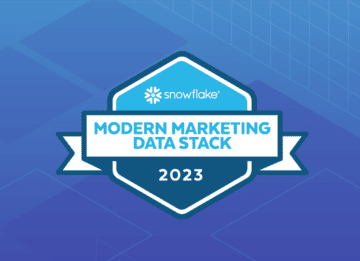Must-see LTV: Investing in identity-based marketing for brand loyalty
Customer attention is waning. Marketing departments are moving away from the older methods of spray and pray that achieved minimal ROI. Gone are the days of delivering messages through wide channels to be consumed by an audience of passive participants.
There are now new, niche ways to connect with prospects and customers with relevant messages. But brands are still struggling on how to capitalize on highly-targeted marketing campaigns because they can’t recognize who their audience is on each platform. Now, marketers are pivoting to identity management instead of targeted media to create long-lasting customer engagement.
But in order to be effective, the use of consumer insights, identity management, and data can make the difference between customers engaging or dismissing communication from brands.
The State of Customer Data
Marketers need to collect data with the intent of creating audiences— captive individuals with similar attributes who are the ideal targets for your marketing messages. But with customer data elements siloed within your organization and the inability to recognize the same customers across channels, campaigns will be limited in scope. Personalization at scale — and throughout the entire buyer’s journey — is hard to achieve with siloed data and even harder to maintain if data is left to decay in your database.
For most companies, keeping data up-to-date and accurate is still a manual process which can result in poorly performing campaigns and irrelevant offers to their audiences. To get the ROI you need from strategic marketing campaigns, clean data is crucial. An organization can generate up to 70% more revenue based solely on having— and keeping— clean data. Many marketers rely on internal data sources which can have issues of accuracy, timeliness, and lack of completeness. Some marketers only use third-party data with limited dimensions.
Is your customer data complete enough to drive personalization across channels? Here’s a look at the current data struggles that marketers are facing:
- 69% of marketers say their customer data is stored in three or more systems.
- Only 9% of marketers can consistently recognize customer audience members across all of the media channels at their disposal.
- 96% of marketers struggling with data collection pointed to building a comprehensive single view of a customer as their biggest challenge.
Right now, marketing departments inside of every company —regardless of size and budget —are facing three major obstacles that are keeping them from creating lifetime value and garnering loyalty from their customers.
- Bringing Data Together From Internal and External Sources
- Creating One-to-One Experiences with Personalization
- Providing Consistent Experiences Across Channels
These three issues are not unique to any company and yet, can be solved with one solution. To create the customer experience that will separate brands from their competition, companies need to invest in an identity resolution provider.
Connecting and Completing Customer Data
The use cases for identity resolution are wide-ranging and companies are discovering previously unrecognized audience segments that engage with their brands. With audience data insights, you can go further with niche market strategies like account-based marketing, event marketing, and more. You can build new data-driven personas, craft more targeted campaigns, and reach the right people in the right channels at the right times with the right messages. You can also build look-alike audiences to expand your reach.
Identity resolution allows you to understand and know your customer on a one-to-one level. You increase audience insights and engagement, shorten sales cycles, and improve customer support. You also provide exceptional lifetime value based on preferences delivered in real-time.
When it comes to evaluating brands and services, your customers have plenty of options and limited attention. Make it easier for your brand to engage them where they are, on the platforms and channels of their choice, to help them assess why your offering is right for them.
Recent Blogs
-
 September 21, 2023 Discover How FullContact is Building Trusted Customer Relationships through Snowflake's Native Application Framework Customer 360, Website Recognition, Identity Resolution
September 21, 2023 Discover How FullContact is Building Trusted Customer Relationships through Snowflake's Native Application Framework Customer 360, Website Recognition, Identity Resolution -
 September 20, 2023 Transform Your Customer Experience with FullContact Customer Recognition and Boost Your Conversions Website Recognition, Identity Resolution
September 20, 2023 Transform Your Customer Experience with FullContact Customer Recognition and Boost Your Conversions Website Recognition, Identity Resolution -
 September 14, 2023 FullContact Recognized as a Leader in Snowflake’s Modern Marketing Data Stack Report FullContact News, Partnership
September 14, 2023 FullContact Recognized as a Leader in Snowflake’s Modern Marketing Data Stack Report FullContact News, Partnership